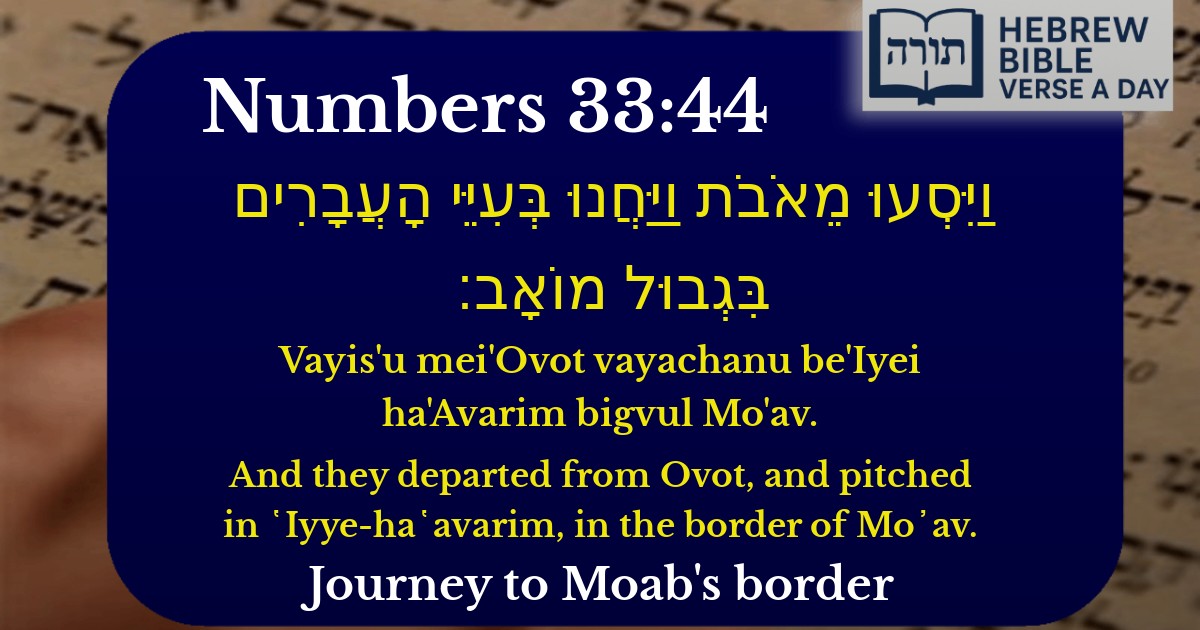Join Our Newsletter To Be Informed When New Videos Are Posted
Join the thousands of fellow Studends who rely on our videos to learn how to read the bible in Hebrew for free!
Hebrew Text
וַיִּסְעוּ מֵאֹבֹת וַיַּחֲנוּ בְּעִיֵּי הָעֲבָרִים בִּגְבוּל מוֹאָב׃
English Translation
And they departed from Ovot, and pitched in ῾Iyye-ha῾avarim, in the border of Mo᾽av.
Transliteration
Vayis'u mei'Ovot vayachanu be'Iyei ha'Avarim bigvul Mo'av.
Hebrew Leining Text
וַיִּסְע֖וּ מֵאֹבֹ֑ת וַֽיַּחֲנ֛וּ בְּעִיֵּ֥י הָעֲבָרִ֖ים בִּגְב֥וּל מוֹאָֽב׃
Parasha Commentary
📚 Talmud Citations
This verse is not quoted in the Talmud.


Geographical Context
The verse describes the journey of Bnei Yisrael from Ovot to Iyye-ha'Avarim, located on the border of Moav. Rashi (Bamidbar 21:11) explains that "Iyye-ha'Avarim" means "the ruins of the crossings," referring to the remnants of structures built by the Emorites when they crossed into Moav. This location marked a transitional point in their travels, as they were preparing to enter Eretz Yisrael.
Spiritual Significance
The Kli Yakar (Bamidbar 21:11) notes that the name "Iyye-ha'Avarim" alludes to the spiritual challenges Bnei Yisrael faced. The word "avarim" (crossings) hints at their need to overcome obstacles and transgressions (from the root "averah") before entering the Land. This encampment served as a reminder to repent and refine their character.
Historical Background
According to the Ramban (Bamidbar 21:11), this location was strategically significant because it was near the territory of Moav, whose king, Balak, would soon attempt to curse Bnei Yisrael (as recounted in Bamidbar 22-24). The Torah details their journey to emphasize Divine providence in guiding them through hostile lands.
Lessons from the Journey